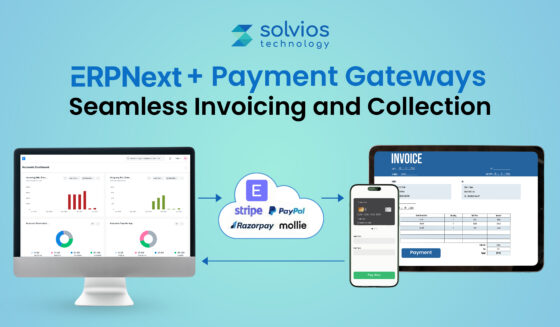
Introduction
Artificial Intelligence (AI) is changing how we interact with mobile applications!
Initially, we had to access applications physically, but today, you can operate an entire application using voice commands. Moreover, features like predictive analysis, personalized recommendations, and chatbots have introduced an evolution in mobile app development.
Interestingly, AI is just a step into advanced technology.
Combining the power of AI with the possibilities of React Native opens up new avenues for users and business owners, namely:
Perks of Using the AIxML Platform
Human-oriented Emotions and Behavior
Machines that can learn and mimic human behavior can be used to automate multiple time-consuming tasks. This improves productivity and efficiency by saving effort, resources, and time.
Access to Personalized Offerings
Personalizing services and solutions improves customer experience, relationships, and revenue. It makes customers feel valued, which increases their satisfaction and loyalty.
Improved App Interactions
Integrating AI into your operation improves app interactions, increases engagement, and boosts conversions, adding to the business growth.
Therefore, this blog will look at the steps in developing AI-based mobile apps with React Native. So continue reading as we learn more about the core concepts, steps involved, and prerequisites, among other aspects, in the following sections.
Understanding Core Concepts of React Native x AI Mobile App
Artificial Intelligence (AI) is the essence of machine learning. Simply put, it is how machines learn, understand, and react like humans. Thanks to its soaring popularity, AI is at the base of every modern application, allowing automated operations using its subsets, Machine Learning (ML) and Deep Learning (DL).
So now that we have an idea of what AI is about let’s focus on its subsets below:
Machine Learning (ML)
Machine learning is a subset of AI that examines data and human behavior. Machines constantly learn from prior experiences and update their knowledge using fresh data inputs from users.
They can simultaneously interpret, evaluate, and recognize several patterns and data sets, resulting in better solutions. In simple words, ML allows robots to learn and mimic human thoughts and behavior. It uses human inputs and applies this information to expand its knowledge base.
Deep Learning (DL)
Deep Learning (DL) is a more complex subset of Machine Learning. Also known as neural learning, it analyzes data in-depth, employing unstructured and structured data to enhance algorithms.
Data Learning (DL) is a unique subset of AI that advances automation by leveraging robot learning, which adapts to new patterns using input from human activities.
Now that we understand the two subsets of AI, let’s learn more about the benefits of integrating AI into an app using React Native app development services.
Benefits of Integrating AI into React Native Apps
- Cross-Platform Compatibility: React Native enables users to develop applications for cross platform simultaneously. It runs smoothly across both Android and iOS operating systems, saving time and resources.
- Rich Ecosystem: Users opting for React Native sign up for a rich ecosystem that offers a variety of plugins and libraries. Access to such vast resources simplifies integrating AI features into your app.
- Performance Optimization: React Native’s JavaScript bridge adds to the performance of developed applications. It ensures optimal performance even when dealing with AI-heavy computations.
- Community Support: The most significant advantage of the React Native platform is access to a vast community. This community offers ample support and resources, making it easier to overcome challenges during development.
Prerequisites to Develop an AI App with React Native
Developing AI apps with React Native can be a time-consuming procedure. Therefore, you must align your development with prerequisites to deliver optimal AI solutions and streamline the development procedure.
Let’s learn more about the two primary requisites to develop AI apps with React Native.
TensorFlow
TensorFlow is Google’s preferred deep learning tool that assists machines in performing tasks through neural network training. This program allows you to utilize Inception, a classifier, to build your model. Additionally, you can leverage a binary file with the training model to save time when developing networks from scratch.
Inception
Inception is a powerful pre-requisite tool developed by Google. This powerful tool simplifies image classification and is trained for nearly 2000 images.
Let’s take a look at the development aspects of React Native x Tensorflow.
The React Native Components Include:
- React native tensorflow – npm i @tensorflow/tfjs-react-native
- React native caffe 2 – npm i react-native-caffe2
- React native coreml – npm i react-native-coreml
- React native image ml – npm i react-native-core-ml-image
Step-by-Step Guide to Developing an AI-Based App with React Native
Developing an AI-based app using React Native can be challenging, especially when you have a limited idea of the development project. Therefore, let’s look at the steps in developing an AI-based app for sound recognition using React Native.
Step 1: Configure the Project
module.exports = {
getAssetExts() {
return [‘pb’, ‘txt’];
}
}This configuration ensures that the project recognizes files with the extensions pb (model file) and txt (label file).
Step 2: Add TensorFlow Model to Assets
Next, it’s time to place the TensorFlow model file in your assets folder and enable image recognition using the following prompt:
tensorflow_inception_graph.pb
Step 3: Add Label File to Assets
Once you’re done adding TensorFlow model to your asset, it’s time to add the label file in the assets directory using the prompt:
tensorflow_labels.txt
Step 4: Initialize the tfImageRecognition API Class
Once both the label and model files are in place, initialize the `tfImageRecognition` API class:
const tfImageRecognition = new tfImageRecognition({
model: require(‘./assets/tensorflow_inception_graph.pb’),
labels: require(‘./assets/tensorflow_labels.txt’),
});
Step 5: Implement the Recognize Function
Finally, it’s time to use the trained model to recognize an image:
“const results = await tfImageRecognition.recognize({
image: require(‘./assets/panda.jpg’),
});These steps will allow your React Native app (powered by TensorFlow) to match and identify images accurately. TensorFlow’s DL abilities will further optimize the training models, ensuring high performance and precision.
Best Practices for AI-Based App Development
a. Use of Suitable Code Editor
Code editors are crucial for smooth coding and easy commenting. We suggest using the Sublime Text 3 editor, which simplifies coding and offers unique features like split, shortcuts, command palettes, and search.
b. Analyze Raw Data
Good coding skills are needed to understand raw data thoroughly. Your input data allows you to develop robust training sets and enhance results. Therefore, ensure you have the data to build your model and algorithm.
c. Be User-centric
As a developer, you must ensure your users are in charge of the application. Therefore, you should implement appropriate features and clarity in your design considerations. Remove any elements that are unneeded or redundant. You should also ensure that you satisfy your users’ needs.
d. Make Use of the Python Dictionary
The dictionary stores all your data in Python. There are unique fundamental values that hold the information usefully. When you save data in the dictionary, you save user ID or profile information. This simplifies code and eliminates the need for if/else expressions.
e. Use Machine Learning Tools
In addition to following the basics of streamlined development, it’s best to use the latest and upcoming ML tools.
Here are some unique tools that you could use for your development today:
- Gamelaykit
- C++
- Apple Core ML
- NLP
- Caffe2
- Tensorflow
- Python API
e. LowCode Platforms
Focus on employing low-code platforms to create AI-powered app solutions that increase productivity and quality. These platforms promote cooperation and facilitate intuitive app development.
Challenges and Considerations for AI x React Native Apps
Data Collection and Privacy
Data collection and privacy is a big challenge for every company. Therefore, you must ensure secure data collection while complying with privacy laws (e.g., GDPR) to safeguard user data without breaching their privacy.
Model Training and Optimization
Training AI models with massive datasets and optimizing them for mobile performance may require a lot of resources. Such models necessitate frequent updates and fine-tuning.
Cross-Platform Compatibility
Ensuring AI capabilities operate flawlessly across iOS and Android takes extensive testing, management, and platform-specific customization.
Performance Issues
AI-driven features can significantly influence app performance, resulting in slower reaction times and battery consumption. As a result, they demand optimization and effective resource management.
Why Choose Solvios Technologies for Your AI-Based App Development?
Developing an AI app using React Native requires precision, expertise, and tools. This is where Solvios Technology steps in as a dedicated React Native app development company. Our team of premier React Native helps you create apps with specialized features unique to your customers.
So whether you’ve already planned for your AI-powered app or need expert insight into the planning, we’re ready for you. Connect with our experts today!
Tags
Related Blog
Want to get started with App Development?
These applications are acquiring enormous prevalence by offering hands-on enterprise mobility solutions for organizations around the globe.
Start A Conversation















